Abstract
OBJECTIVE--To describe the characteristics at birth of children conceived by in vitro fertilisation (IVF) or by gamete intrafallopian transfer (GIFT) and to assess whether they differ from those of children conceived naturally. DESIGN--Survey of children resulting from IVF or GIFT and comparison of their characteristics at birth with national statistics. SETTING--England, Scotland, and Wales from 1978 to 1987. SUBJECTS--1267 Pregnancies conceived by IVF or GIFT, which resulted in 1581 liveborn or stillborn children. MAIN OUTCOME MEASURES--Sex ratio, multiplicity, gestational age at birth, birth weight, stillbirth rate, perinatal and infant mortality, and prevalence of congenital malformations. RESULTS--The ratio of male to female births was 1.07:1; 23% (249/1092) of the deliveries were multiple births compared with 1% for natural conceptions; 24% (278) of 1015 deliveries were preterm compared with 6% in England and Wales; 32% (406) of 1269 babies weighed less than 2500 g compared with 7% in England and Wales. The high percentage of preterm deliveries and of low birthweight babies was largely, but not entirely, due to the high frequency of multiple births. The rate of stillbirth, perinatal mortality, and infant mortality were twice the national average, these excesses being due to the high frequency of multiple births. One or more major congenital malformations were detected during the first week of life in 35 (2.2%) of 1581 babies. This figure is comparable with population based estimates of the prevalence of congenital malformations. The types of malformations reported varied, and the number of each specific type was small. The health of the children was not evaluated beyond the perinatal period. CONCLUSIONS--Multiple pregnancies often result from assisted conception and are the main determinant of the outcome of the pregnancies and of the health of the children at the time of birth. Congenital malformations are comparatively rare, so larger numbers of children need to be studied before firm conclusions can be drawn. The pooling of data from different countries is recommended.
Full text
PDF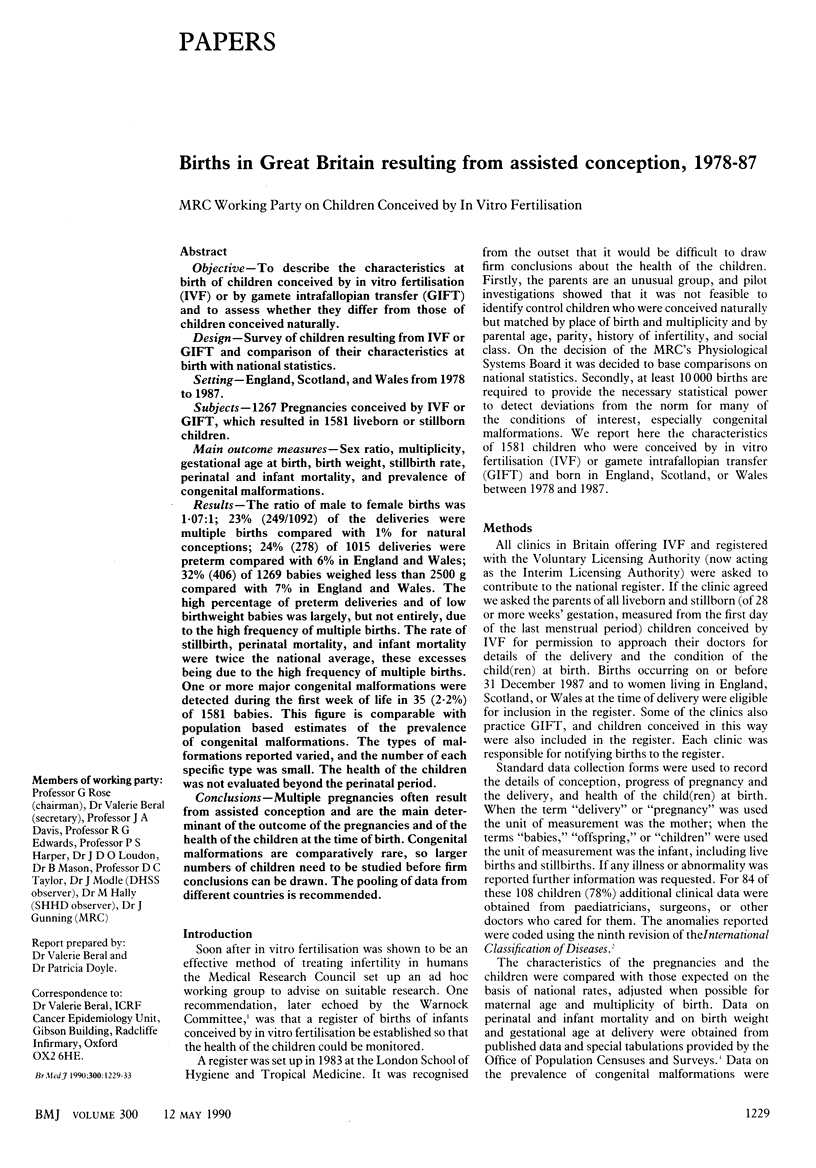
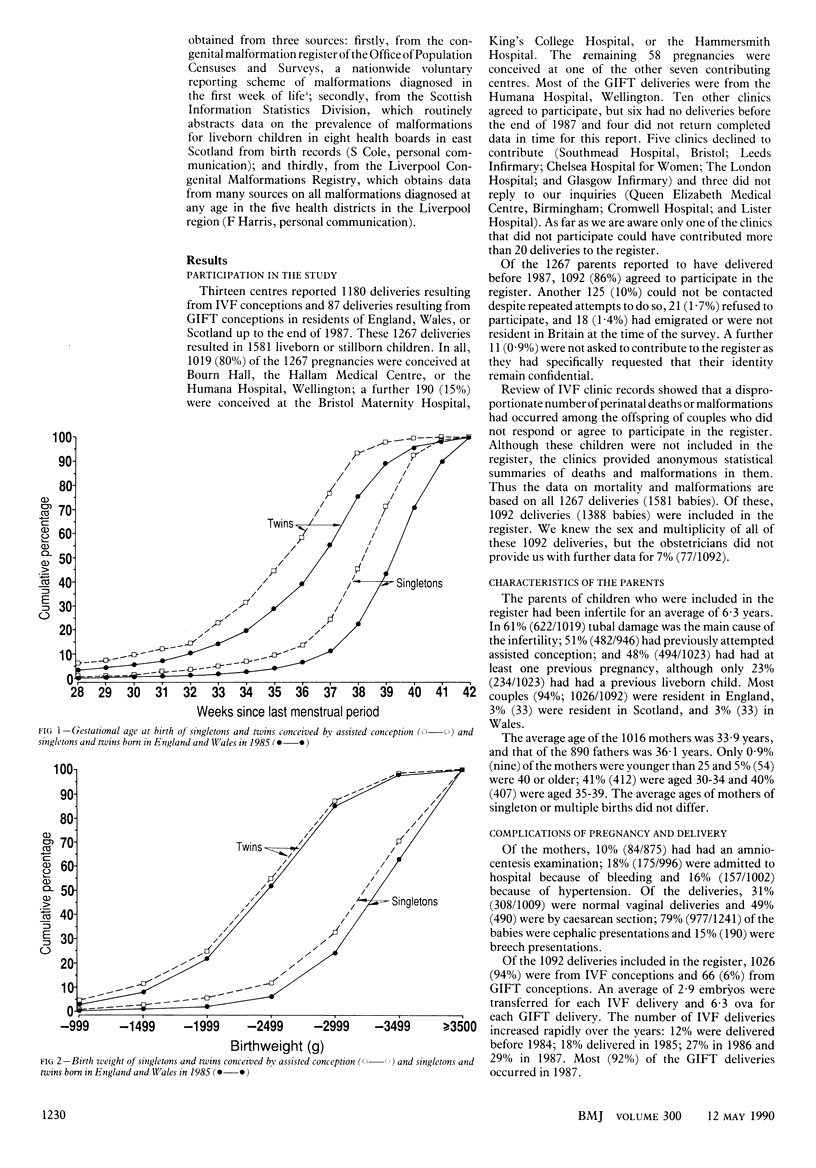
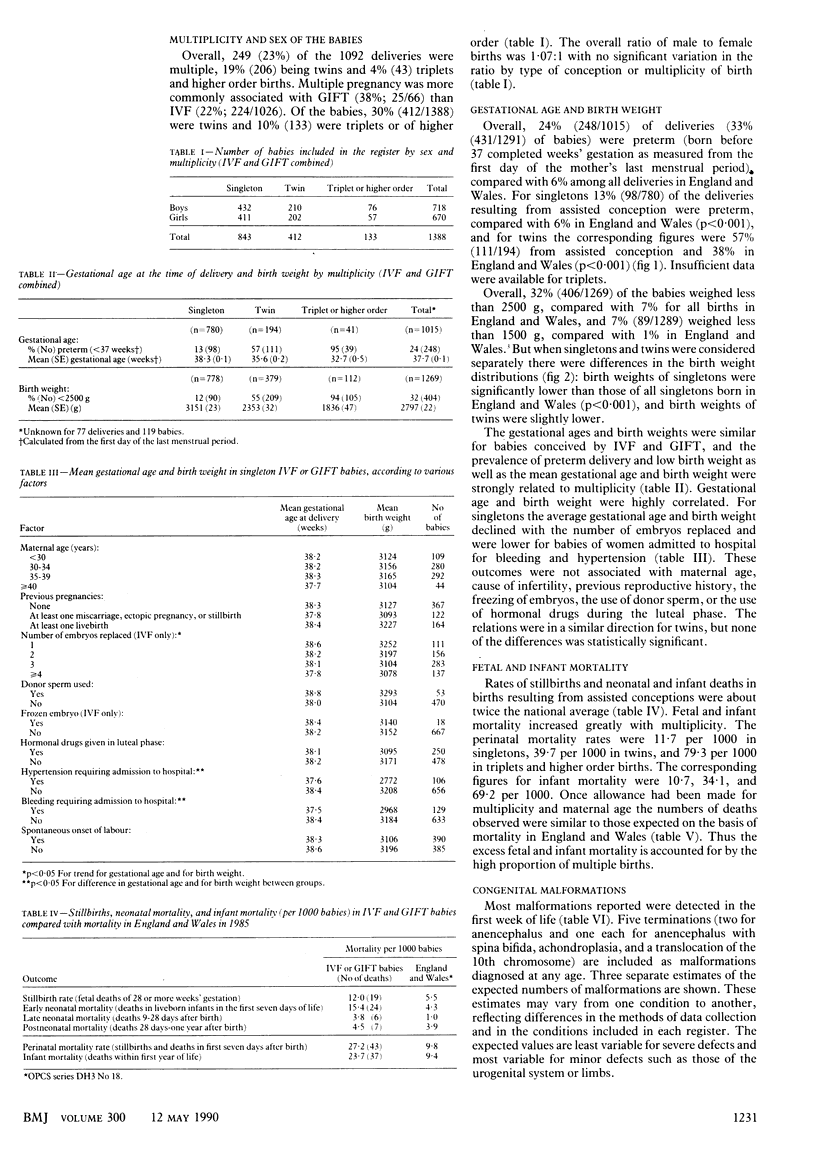
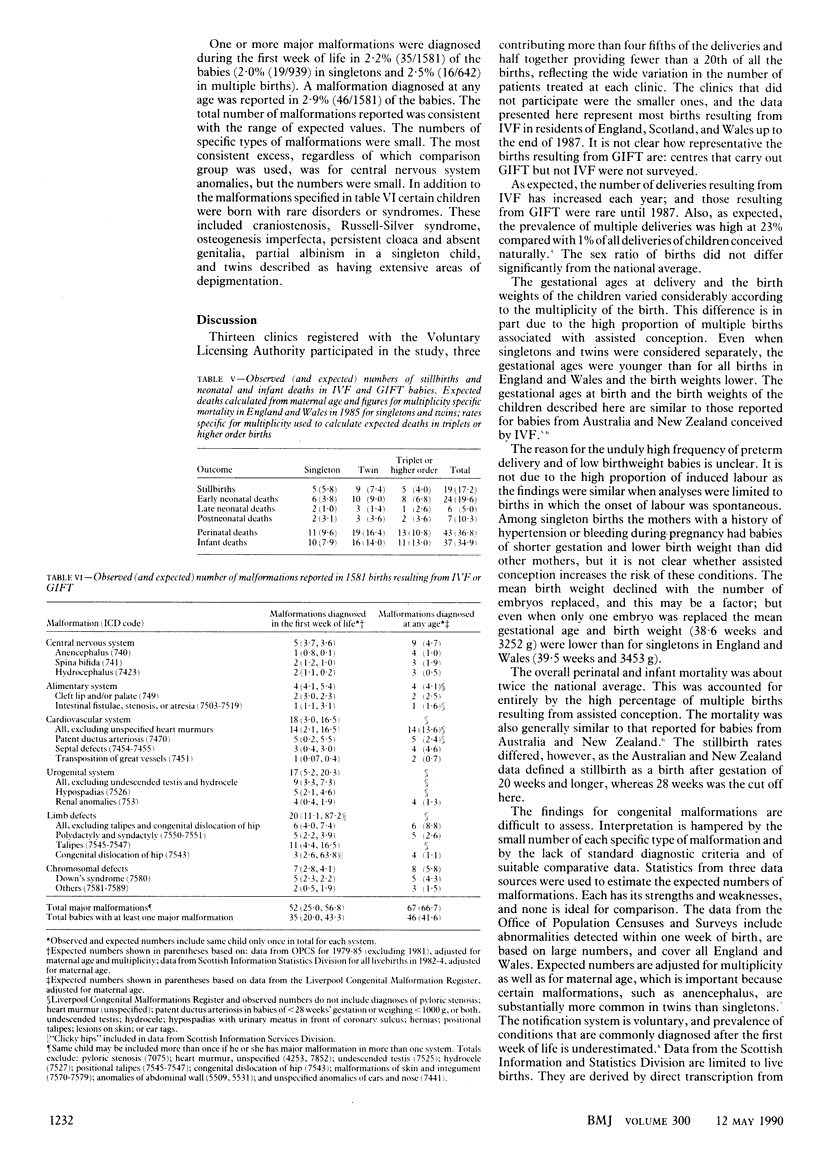
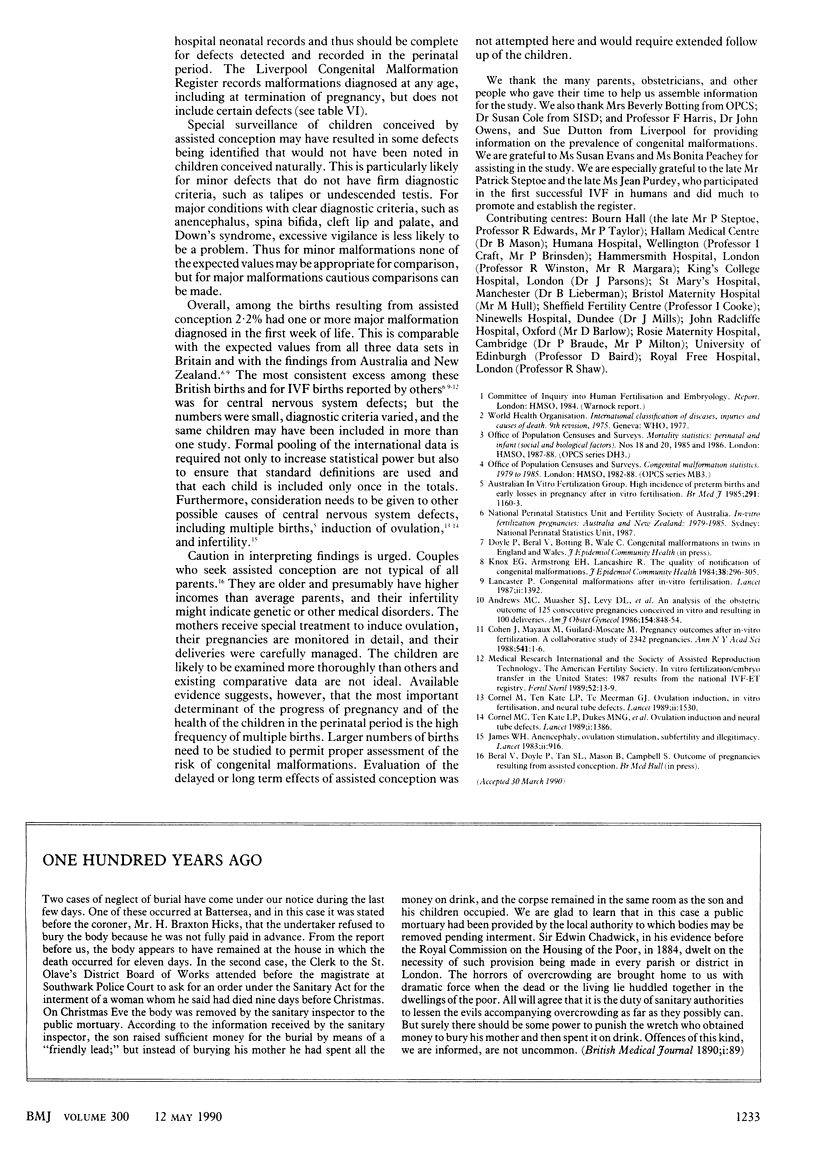
Selected References
These references are in PubMed. This may not be the complete list of references from this article.
- Andrews M. C., Muasher S. J., Levy D. L., Jones H. W., Jr, Garcia J. E., Rosenwaks Z., Jones G. S., Acosta A. A. An analysis of the obstetric outcome of 125 consecutive pregnancies conceived in vitro and resulting in 100 deliveries. Am J Obstet Gynecol. 1986 Apr;154(4):848–854. doi: 10.1016/0002-9378(86)90470-9. [DOI] [PubMed] [Google Scholar]
- Cornel M. C., ten Kate L. P., Dukes M. N., de Jong-v D Berg L. T., Meyboom R. H., Garbis H., Peters P. W. Ovulation induction and neural tube defects. Lancet. 1989 Jun 17;1(8651):1386–1386. doi: 10.1016/s0140-6736(89)92827-4. [DOI] [PubMed] [Google Scholar]
- Knox E. G., Armstrong E. H., Lancashire R. The quality of notification of congenital malformations. J Epidemiol Community Health. 1984 Dec;38(4):296–305. doi: 10.1136/jech.38.4.296. [DOI] [PMC free article] [PubMed] [Google Scholar]
- Lancaster P. A. Congenital malformations after in-vitro fertilisation. Lancet. 1987 Dec 12;2(8572):1392–1393. doi: 10.1016/s0140-6736(87)91277-3. [DOI] [PubMed] [Google Scholar]


